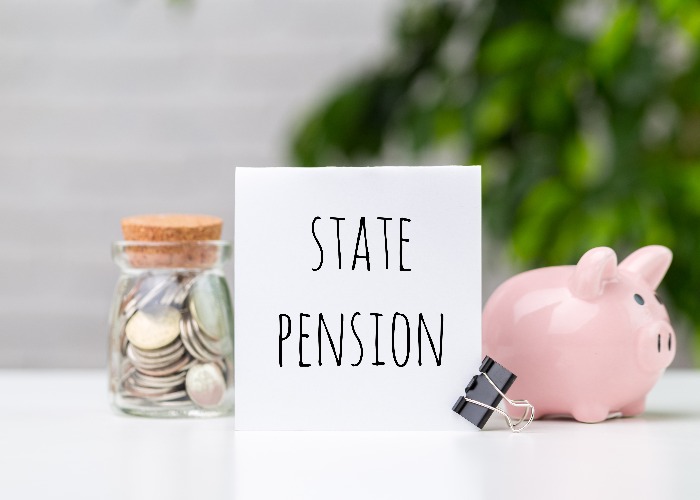How Much State Pension Will I Be Entitled To?
A full state pension, contributory, in its current form is €248.30 per week or €12,911.60 per year. Contributory refers to the Pay Related Social Insurance (PRSI) contributions we have paid in tax throughout our working lives. One would need an equivalent retirement fund of circa €322,790 to provide this level of pension income into the future. The State Pension is ground zero from which to build our passive income in retirement and is currently available from age 66.
Over the coming decades there will be a sizeable demographic shift from those working to those receiving the State Pension. There are currently circa 2.4 million people employed and over 600,000 retired. Over the next couple of decades, it is anticipated another 400,000 will retire. That’s a lot of State Pensions. It is likely we will know a family member or friend who will be applying for the State Pension over the next couple of decades. We are also living longer due to the increase in our standards of living along with persistent breakthroughs in science, technology, and medicine.
Any defined benefit pension, even one provided by the State is a promise of a specified income in the future. The financial resources required to meet this promise are substantial and prone to a variety of economic variables. The State Pension is subject to change and is not guaranteed. We do not include a State Pension when building financial plans for clients below the age of fifty-five and are reluctant to include it in general.
Receipt of a State Pension is dependent on the number and type of PRSI contributions that have been paid or credited throughout our working lives. The purpose of this blog post is to provide a State Pension checklist to guide you before applying for the State Pension.
Step 1
View or request a copy of our Pay Related Social Insurance (PRSI) contribution statement. This can be done through the MyWelfare website:
https://services.mywelfare.ie/en/topics/statements-and-refunds/contribution-statement/
We will need to create a verified MyGovID account, a Public Service Card (PSC) is required.
Step 2
Assuming we have been provided with our entire PRSI record, reconcile our employment history against the PRSI record provided. Record keeping in the 1970’s, 80’s and 90’s was predominantly paper based both from an employer and revenue perspective. This presents the possibility of human error. While every effort has been made to ensure their accuracy this isn't always the case. It is not uncommon for women to have multiple PRSI numbers. A unique PRSI number before marriage, adopted their husbands PRSI number with W at the end upon marrying and then subsequently given a new PRSI number. They were different times. There was also a migration from social insurance stamps to Personal Public Service Numbers (PPSN) and PRSI in April 1979.
Step 3
If there are discrepancies between our employment history in Ireland and our PRSI record we will need to first contact the employer to which no contributions are recorded on our statement. There are a number of obstacles we will need to navigate when contacting previous employers from decades ago:
1. Are they still in business?
2. Are their records of our employment accurate?
3. Do we have any records of our employment? P60’s, payslips etc
Depending on the above we might need to share our employment documentation with the Department of Social Protection or sign an affidavit with our previous employer confirming our past employment. It is the employer’s responsibility to deduct and remit the correct PRSI for all employees. It can take a lot of time and effort to investigate these discrepancies given the time that has elapsed, but it can be the difference between receiving thousands more over the course of our life in retirement which I will highlight below.
Step 4
Credited contributions and disregarded years. Credited contributions are social insurance contributions designed to protect workers who are not in a position to make PRSI contributions. They count towards our overall record and should be automatically awarded if we are in receipt of the following payments:
· Illness Benefit
· Invalidity Pension
· Jobseekers Benefit
· Maternity Benefit
· Adoptive Benefit
· Parents Benefit
· Health & Safety Benefit
· Carer’s Benefit
There are a number of other important factors to consider when reviewing our contribution statement. One of these is the homemaker’s scheme. It is applicable to anyone who was out of work caring for a child under the age 12 or an ill or disabled person aged 12 or over full time since 6th April 1994. There are certain rules that need to be met but up to twenty years can be disregarded or ignored in the calculation of our PRSI contributions average. Details on the Homemaker’s Scheme and other PRSI information can be found here:
Step 5
If we have a blend of public and private sector employment be mindful of how our public sector pension interacts with the state pension. Often, public sector employments are excluded from the calculation of State Pension benefits as it is incorporated in our public sector pension entitlements.
Step 6
If we are in public employment and have less than the maximum 40 years of service, we may have the option to purchase notional service commonly referred to as buying back years or added years. This is assuming it is financially advantageous to do so. Additional Voluntary Contributions (AVC’s) can be particularly useful here. This may also be an option upon taking early retirement/redundancy:
Step 7
If we are no longer an employee, self employed or working outside the EU and under the age of 66 we can opt to pay voluntary social insurance contributions. Based on the cost of voluntary contributions we will need to calculate how long we will need to live in retirement before we recoup our investment. Details on voluntary contributions can be found here:
There are currently two methods in calculating our State Pension entitlement from our contribution statement. These are the yearly average and the total contributions approach. Depending on the result of these calculations there are six State Pension bands that will determine what level of State Pension income we receive. These can be found here:
An example of the difference in qualifying for one rate over another, over ten years is outlined below:
|
Average Contributions Bands |
Personal Weekly Rate |
Weekly Difference |
How Much Less (10Yrs) |
|
48+ |
€248.30 |
€0 |
€0 |
|
40-47 |
€243.40 |
€4.90 |
€2,548 |
|
30-39 |
€223.20 |
€20.20 |
€10,504 |
|
20-29 |
€211.40 |
€11.80 |
€6,136 |
|
15-19 |
€161.80 |
€49.60 |
€25,792 |
|
10-14 |
€99.20 |
€62.60 |
€32,552 |
Most of us will pay hundreds of thousands, if not
millions in tax throughout our working lives. Whether out of work, retiring or working, it’s
important to remember how our employment status will affect our State Pension
entitlements throughout our working lives. Be sure to maximize all our options
and ensure we receive the maximum State Pension entitlement to which we are
entitled.
Link to Spotify podcast episode: https://open.spotify.com/episode/2r9TbKpb4xgmbsh1kJuHpq?si=44edf157cd3645c8
Link to Apple podcast episode: https://podcasts.apple.com/ie/podcast/s2-e6-how-much-state-pension-will-you-be-entitled-to/id1539630506?i=1000539942161
For personal financial planning advice email team@vantagefp.ie or call (01) 539 2670.

